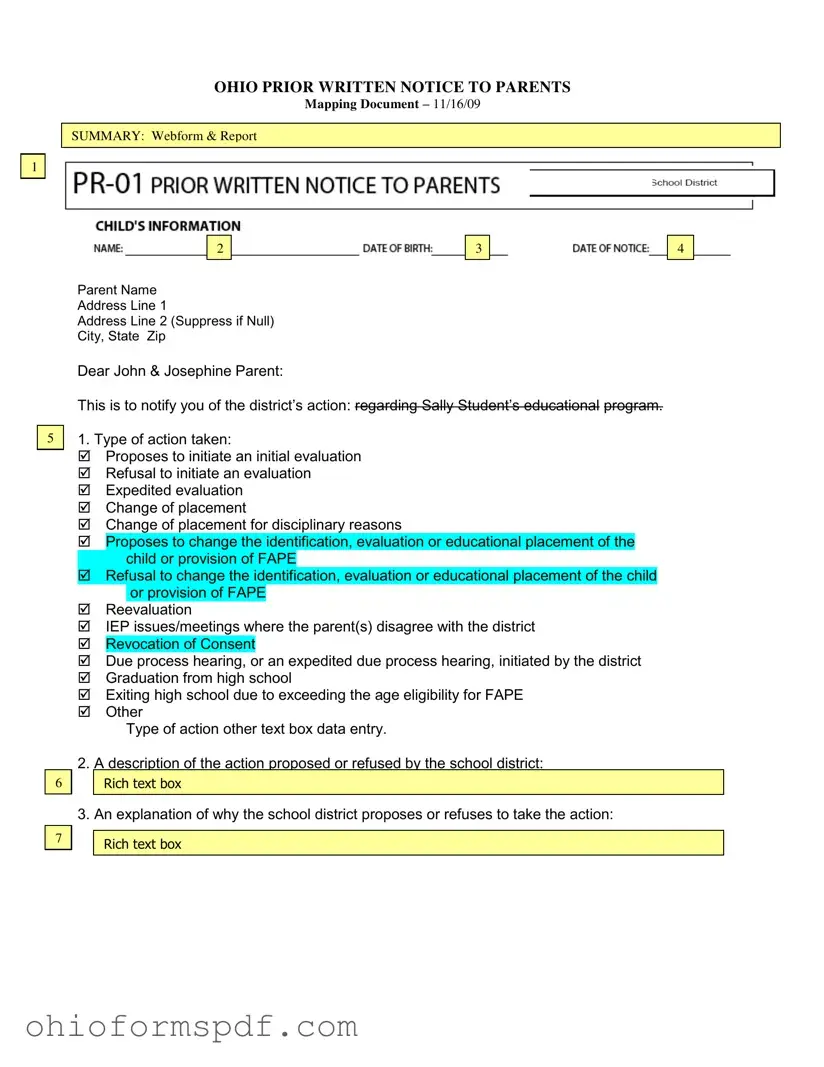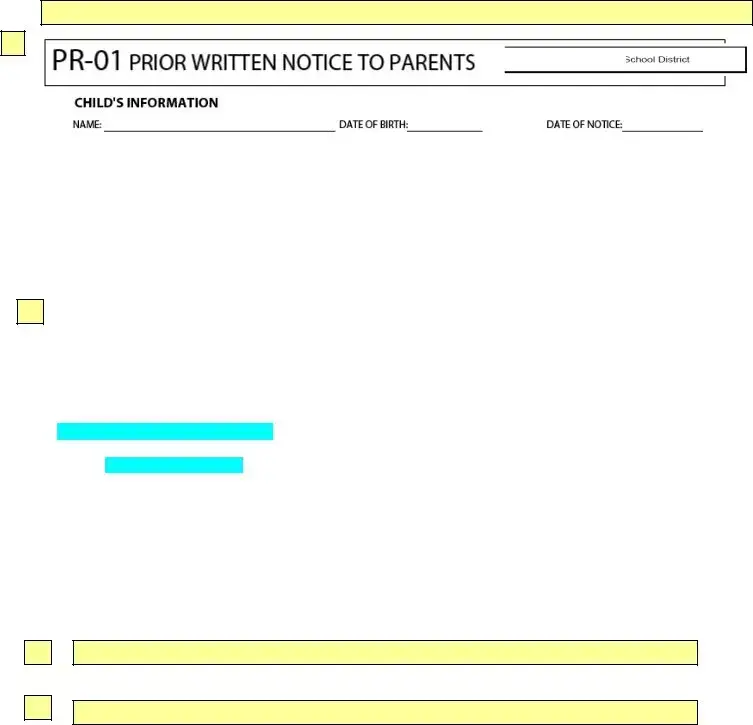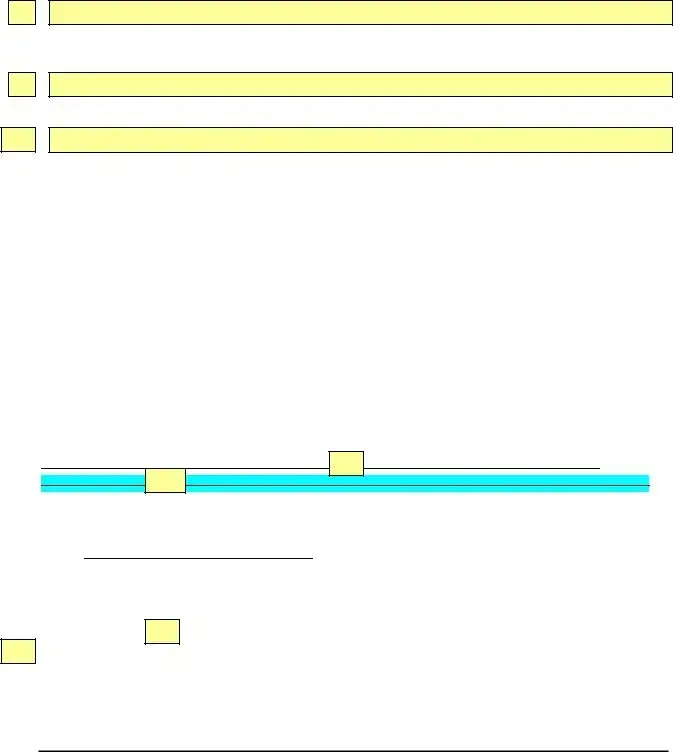What is the Ohio Prior Written Notice form?
The Ohio Prior Written Notice form is a document provided by school districts to inform parents of decisions related to their child's educational program, particularly regarding special education services. This notice outlines the district's proposed actions or refusal of actions concerning a child's identification, evaluation, educational placement, or the provision of a Free Appropriate Public Education (FAPE).
When should parents expect to receive the Prior Written Notice?
Parents should expect to receive the Prior Written Notice whenever the school district proposes or refuses to initiate or change the identification, evaluation, educational placement of the child, or the provision of FAPE. This includes, but is not limited to, actions like initial evaluations, reevaluations, change of placement, and refusal to change educational plans. Parents will receive this notice before any significant decision affecting their child’s education is implemented.
What kind of information is included in the Prior Written Notice?
The notice includes several key pieces of information, such as:
1. The type of action proposed or refused by the school district.
2. A description of the action proposed or refused.
3. An explanation of why the district proposes or refuses to take the action.
4. A description of other options considered by the IEP team and why they were rejected.
5. A description of each evaluation procedure, assessment, record, or report the district used as a basis for the proposed or refused action.
6. A description of other factors that are relevant to the district's proposal or refusal.
This detailed information helps parents understand the rationale behind the school’s decisions and actions regarding their child’s education.
What are procedural safeguards?
Procedural safeguards are designed to protect the rights of children with disabilities, as well as their parents' rights. Under the Individuals with Disabilities Education Improvement Act (IDEIA) of 2004, parents are entitled to certain protections, including the right to receive a Notice of Procedural Safeguards at least once a year, upon initial referral or request for evaluation, upon the filing of a first complaint, and upon request by a parent. These safeguards outline parents' rights in the special education process, ensuring they are informed and involved in their child's education.
How can parents obtain a copy of the procedural safeguards notice?
Parents can request a copy of the procedural safeguards notice from their child’s school district. The Ohio Prior Written Notice form provides contact information for who to reach out to within the district to request this notice. Additionally, a copy is provided upon initial referral for evaluation or parent request for an evaluation, and parents can also obtain it upon filing a formal written complaint or the first due process complaint in a school year.
Who can parents contact if they have questions about the Prior Written Notice or their rights?
If parents have any questions about the actions described in the Prior Written Notice, their rights as outlined in the Procedural Safeguards Notice, or other related concerns, they should contact the individual listed on the Prior Written Notice form. This contact information includes the name, title, phone number, and sometimes the address and email of the designated school district representative. Parents are encouraged to reach out with any questions or concerns they may have about their child’s special education services.




